Garmin sigue decidida a conseguir el dispositivo GPS más pequeño del mercado. Eso es lo que busca con el Garmin Vivosport. Anunciado a finales del verano junto con otros dos dispositivos de la gama Vivo (Vivoactive 3 y Vivomove HR), el Vivosport ha sido el que ha pasado más desapercibido. No es un reloj cargado de tecnología como el Vivoactive 3 ni tiene el diseño y la estética del Vivomove HR, podemos considerarlo el patito feo del grupo. Pero eso no quiere decir que no tenga sus argumentos de venta.
Al contrario, con el Vivosport Garmin ha conseguido un dispositivo bastante impresionante en muchos aspectos. No sólo es la renovación del Vivosmart HR+ (que sirvió a Garmin como prueba de concepto), el Vivosport viene cargado con todas las prestaciones que puedes encontrar en el Vivosmart 3 (contador de repeticiones en el perfil de gimnasio, estimación de VO2Max, seguimiento de estrés, mayor tasa de registro de frecuencia cardíaca…) junto con prestaciones propias de este modelo.
Tras varias semanas de prueba es hora de plasmar todos los detalles en su prueba específica. Como ocurre en muchas ocasiones, la unidad que he estado probando ha sido cedida temporalmente por Garmin, pero una vez completada y publicada será enviada de vuelta. ¿Qué quiero decir con esto? Que no hay ningún tipo de contraprestación de la marca para realizar estos análisis.
Recuerda, si quieres apoyar la página puedes hacerlo comprando a través de los enlaces que encontrarás en esta prueba (ya sea tu nuevo Vivomove HR o papel higiénico). Es la única forma en la que se financia y paga parte de tooodo el trabajo que aquí realizo. No olvides que esto funciona exclusivamente gracias a vosotros y vuestra confianza.
Sin más dilación, ¡vamos con todos los detalles!
Navegar a secciones específicas
VALORACIÓN
Funcionamiento global - 9
Posibilidades de entrenamiento - 7
Plataforma y aplicaciones - 9
Autonomía - 8.5
Acabados y comodidad - 7
Relación precio/prestaciones - 7.5
8
TOTAL
Lo mejor
- Realiza el seguimiento de multitud de métricas, tanto en el día a día como en modo específico de deporte
- GPS, sensor óptico, múltiples actividades… y todo ello en un tamaño muy reducido
- Pantalla a color con buena visibilidad, especialmente en exterior
- A pesar de su pequeño tamaño la autonomía no está nada mal (dentro de lo que podemos esperar)
- Permite transmitir datos de pulso a otros dispositivos a través de ANT+, actuando como sensor de pulso externo
Necesita mejorar
- La correa no se puede sustituir. Cuídala…
- El sensor óptico y el ciclismo no se llevan demasiado bien
- No soporta sensores externos
Resumen
Resumir en pocas palabras la pulsera Garmin Vivosport es sencillo. Es la pulsera de actividad más completa que existe en el mercado, punto. Tal es así que incluso presenta más funciones que una gran cantidad de relojes de precios similares.
Y lo cierto es que, dentro del segmento al que está orientado, es un dispositivo que funciona realmente bien. Garmin ha conseguido un monitor de actividad con GPS destinado a usuarios deportistas en general, y lo ha conseguido sin ofrecer aparentemente ningún sacrificio a cambio.
Garmin Vivosport
Garmin Vivosport es una pulsera de actividad que trata de ir un poco más allá. Estéticamente es idéntica a la Vivosmart 3, que cuenta ya con una larga trayectoria en el mercado. Sólo aquellos con la vista más rápida van a distinguir ambos modelos de un vistazo, y tendrá que agudizarla bastante.
No es la primera vez que Garmin mete un GPS en el pequeño espacio disponible. No es un ejercicio fácil, ya que además del propio chip necesitamos sitio para poder situar una antena, y no hay que olvidar que la batería deberá ser de mayor tamaño para soportar la demanda extra que supone.
Pero al igual que ocurrió en el paso de la Vivosmart HR a la Vivosmart 3, el paso de Vivosmart HR+ (que es el modelo al que sustituye) es igualmente grande. Pero es que Vivosport va algún paso más allá que Vivosmart 3:
- GPS: Bastante obvio, pero no por ello hay que dejar de recordarlo.
- Nueva pantalla: Garmin ha optado por una pantalla a color transflectiva en lugar de la pantalla OLED de Vivosmart 3. Está siempre encendida y es perfectamente visible en el exterior. No es que la pantalla de la Vivosmart 3 no se vea (no llega al punto del Vivomove HR), pero sí puede quedar la impresión de tener un texto algo «lavado»
- Más batería: Mientras que Vivosmart 3 es capaz de aguantar 5 días en modo de monitor de actividad, la batería de mayor tamaño de la Vivosport permite que llegue a 7. Y hay que tener en cuenta que grabando actividad con uso de GPS y sensor óptico es capaz de aguantar hasta 8 horas, una cifra realmente buena para un dispositivo de este tipo
Luego hay alguna que otra diferencia, pero más relacionada con el hecho de contar con GPS que por el dispositivo en sí.
En cuanto al hardware es ya un viejo conocido, aunque por detrás hay un ligero cambio al adoptar el conector de los nuevos modelos de Garmin (FR935, Fenix 5, FR645, etc). Es un cambio bienvenido porque lo cierto es que es mucho más cómodo de usar que la clásica pinza que acompañaba a los modelos anteriores.
El manejo es decididamente sencillo. No hay ningún tipo de botón que puedas presionar, todo el control se lleva a cabo a través de su pantalla táctil. Pulsando, deslizando o manteniendo la pantalla pulsada. Por ejemplo si queremos entrar al menú principal deberás dejar pulsada la pantalla.
La organización se realiza por widgets, y podemos ir pasando de uno a otro simplemente deslizando el dedo por la pantalla. En cada uno de ellos se muestra una información diferente (pasos, distancia, pisos subidos, minutos de actividad, etc.).
Y cada uno de ellos permite ampliar la información si pulsamos sobre la pantalla. Por ejemplo si pulsamos en el widget de estrés nos permitirá ver la gráfica de la última hora.
Toda la información que recoge se transmite a través de Bluetooth a tu smartphone (conviene revisar las listas de compatibilidades antes de comprar, por ejemplo ahora mismo hay algunos problemas de sincronización con los últimos modelos de Huawei), y lo hace de forma constante. Así que en cualquier momento podrás abrir la aplicación del teléfono y consultar todos los datos de actividad del día.
Cualquiera de los datos que se te ocurra o que veas podrás revisarlo con mucho mayor detalle, incluyendo gráficas del día o de la semana. Por ejemplo los pasos y en qué momento he estado más activo andando más.
O por ejemplo otra de las nuevas métricas presentes en los nuevos modelos de Garmin, como es el seguimiento del estrés. Para realizar esta medición la pulsera utiliza la variabilidad del pulso y un algoritmo de Firstbeat (los mismos que se encargan de los algoritmos de cálculo de calorías o estimación de VO2 máximo, entre otros).
En el cómputo del estrés no sólo me refiero al estrés diario, también a la actividad deportiva. Por ejemplo en esta gráfica puedes ver perfectamente cómo ha sido mi día de hoy.
Puedes ver cómo mi día ha sido muy tranquilo mientras estaba durmiendo. Salida en bici con entrenamiento de intervalos, terminando con cifras de estrés muy altas y a partir de ahí se puede ver cómo voy recuperando poco a poco.
En definitiva, Garmin Connect es una aplicación muy completa especialmente si la combinamos con dispositivos tan completos como la Garmin Vivosport.
En uso
No hay muchas cosas que difieran en el uso de la Vivosport comparado con otros monitores de actividad de Garmin, e incluso de relojes GPS. Esto es así porque la propuesta de Garmin es ofrecer una Vivosmart 3 con GPS, por lo que el software base y prestaciones son idénticas. A continuación voy a dar un repaso a todas sus funciones, pero siempre puedes leer la prueba original si quieres tener algún detalle más profundo de alguna de sus funciones.
La inmensa mayoría de los parámetros a configurar se harán desde la aplicación. Las opciones de configuración del dispositivo son bastante sencillas, así que cada vez que queramos cambiar algo debemos acudir al teléfono. No obstante lo más normal es que no necesites realizar demasiados cambios una vez configurada por primera vez.
En su pantalla podrás ver toda la información que permite ofrecer, que es amplia y variada. Se organiza a través de widgets, cada uno de ellos es una pantalla que podemos desplazar con el dedo. En la aplicación puedes activar o desactivar los que no te interesen, dejando sólo los que vayas a utilizar.
Por supuesto Garmin ha incluido todas las novedades que llegaron a la Vivosmart 3. Por ejemplo el registro automático de actividad, entrenamientos de fuerza conteo de repeticiones e identificación de ejercicio, seguimiento de estrés durante las 24 horas e incluso estimación de VO2Max que suele estar reservado a modelos de gama superior.
Si llevas la pulsera todo el día puesta dispondrás de seguimiento de frecuencia cardíaca las 24 horas. Podrás ver la frecuencia cardíaca en la pantalla de la pulsera junto con la frecuencia cardíaca en reposo media de los últimos siete días.
Y si pulsas en esta pantalla, también la gráfica de la última hora junto a mínima y máxima de ese periodo.
Como decía en la sección anterior, toda esta información se vuelta a Garmin Connect, donde podrás acceder a gráficas de todo el día y donde podrás ver también cualquier otra actividad que hayas realizado, tanto registrándola como deporte (carrera y bici a mitad de tarde en color verde intenso) como actividades registradas de forma automática gracias a la función Move IQ (el paseo al final del día en color gris).
Otra de las novedades estrenadas en el Vivosmart 3 era el control de estrés. En la pulsera puedes ver en cualquier momento el detalle al momento.
Al igual que ocurre con la frecuencia cardíaca en reposo, toda esa información se traslada a la aplicación, donde podrás acceder a todo ello con mayor detalle.
Practicando deporte tenemos varios deportes, que se pueden configurar de forma independiente. Esto significa que podrás crear pantallas de datos personalizadas para cada uno de ellos, así como diferentes tipos de alertas o avisos (lap automático u otras alertas de tiempo, distancia, frecuencia cardíaca o calorías). Estos son los perfiles disponibles:
- Caminar
- Carrera
- Ciclismo
- Entrenamiento de fuerza
- Cardio
- Otros
Cada una de estas actividades se puede configurar de una forma diferente, tanto a nivel de alertas como los campos de datos que verás en cada una de las pantallas.
Como disponemos de GPS todas las actividades realizadas al aire libre se guardarán con su correspondiente track. Por supuesto, con detalles completos de ritmo/velocidad y distancia como en cualquier reloj GPS e incluyendo datos de metros ascendidos y descendidos dado que cuenta con altímetro barométrico.
Y por último volver a recalcar que tenemos la opción de seguimiento de entrenamiento en el gimnasio. Al activar este modo la pulsera identificará de forma automática tanto el ejercicio realizado como el número de repeticiones.
Los resultados son variables, tanto identificando el ejercicio como contando el número de repeticiones. Y evidentemente hablando de ejercicios donde el movimiento de la muñeca en uno u otro sentido está relacionado. Por ejemplo es capaz de identificar sentadillas (porque la muñeca sube y baja), pero si por ejemplo estás haciendo ejercicios de piernas en una máquina en la que permanezcas sentado lógicamente no tiene posibilidades de registrar nada.
Fiabilidad GPS
Dado que uno de sus principales argumentos de venta es contar con GPS es evidente que hay que realizar pruebas de recepción de GPS. No tendría sentido no hacerlo.
Mi forma de realizar las pruebas es siempre la misma. En lugar de tratar de establecer una ruta y hacer puntuaciones basándome en ella prefiero comparar los registros con otros modelos que llevo durante el mismo entrenamiento. El motivo de hacerlo de esta manera es sencillo: no siempre es extrapolable el resultado de días diferentes.
La señal GPS se ve afectada por multitud de variables no controlables. Nubes, atmósfera, densidad de los árboles, situación de los satélites en sus órbitas, etc. Por lo tanto no puedo decir que un dispositivo probado hoy funciona mejor que otro probado hace 3 meses. Las condiciones de prueba no han sido las mismas. Por tanto al probar todos el mismo día me preocupo de los tracks de los dispositivos, y no de las condiciones que afectan a la recepción de señal.
He hecho multitud de entrenamientos con el Garmin Vivosport, tanto usándolo por separado como en combinación con otros dispositivos para comparar registros de frecuencia cardíaca (que veremos a continuación) como señal de GPS.
Comenzaré por este entrenamiento de carrera en una de mis zonas más habituales. Y como es tan habitual sé perfectamente dónde puede haber zonas conflictivas. En esta ocasión acompaña para la prueba otros dos dispositivos Garmin, un Forerunner 230 y un Forerunner 935.
El inicio del entrenamiento lo hago paralelo a la carretera, sin ningún tipo de obstáculo. Eso se traduce en tres tracks prácticamente superpuestos.
Al entrar en una zona más urbana (Puerto Banús) comienzan los conflictos. Los 3 dispositivos hacen el primer giro correctamente, pero al terminar la curva el Vivosport prefiere correr por la acera contraria. Se vuelve a unir al llegar a la rotonda, pero nuevamente cambia a la otra acera al salir de ella. Sólo el FR230 realiza perfecto todo el trazado urbano, porque el FR935 también se extravía ligeramente en la salida de la rotonda.
Es sólo temporal, un poco más adelante, aún por zona urbana, todo se vuelve a reunificar y a mostrar los tracks superpuestos.
Vamos con un poco de bici. Vueltas a un mismo circuito, que es una prueba que me gusta mucho para el análisis de los GPS por hacer giros siempre en los mismos puntos.
Amplio los tres puntos de giro.
Elijo precisamente esto a propósito para poder mostrarte cuál es el impacto que se produce con la grabación de datos inteligente que realiza el Vivosport, comparado con la grabación cada segundo del FR935 y Edge 520.
La grabación inteligente realiza registros en intervalos variables, generalmente de 3-4 segundos, y es lo que queda grabado para confeccionar el track. El resultado es el que ves arriba, en lugar de hacer giros limpios se pueden ver muchos cortes en el trazado. No hay giros redondos, se aprecian más como si fuesen polígonos.
Sigamos con ciclismo. Los desplazamientos a velocidades más elevadas sin duda ayudan tremendamente en el registro de GPS.
En estas circunstancias el registro es virtualmente perfecto en los tres dispositivos. El único punto donde hay alguna discrepancia es en las zonas más lentas, como por ejemplo en este tramo de carretera llamado «Los Caracolillos» (los que vengáis al Ironman 70.3 Marbella lo disfrutaréis).
De nuevo la diferencia se vuelve a producir por la forma de grabar datos, pero el resto del entrenamiento queda registrado a la perfección.
En definitiva veo buen nivel de registro por parte del Vivosport. Tiene sus ligeros fallos aquí y allá, pero exactamente igual que cualquier otro reloj GPS. Pero no veo nada catastrófico ni ninguna situación en la que pueda decir que la poca huella que tiene la pulsera en la muñeca conlleva concesiones a una antena demasiado pequeña o ineficaz.
Las únicas situaciones extrañas se producen por criterios de software y su forma de registrar datos. Eso es lo único que tienes que valorar, y si vas a realizar actividades en situaciones en las que haya multitud de cambios de dirección (por ejemplo, trail), podrías notar el impacto de la grabación de datos inteligente y perder algunos puntos importantes. Pero para correr en asfalto o hacer paseos por montaña no creo que vayas a tener problemas de ningún tipo.
Sensor de pulso óptico
Como ya has visto anteriormente, la Garmin Vivosport permite hacer el seguimiento de frecuencia cardíaca durante las 24 horas del día. En este modo de funcionamiento no veo ningún problema ni registro extraño al revisar las gráficas. Es decir, las mínimas de todos los días son muy similares entre ellas, no hay picos de pulsaciones fuera de actividades de deporte y las gráficas no presentan nunca cosas extrañas.
Pero como siempre digo, al final lo que más me importa es el funcionamiento que ofrece el sensor mientras estamos practicando deporte. En definitiva compramos este tipo de dispositivos para este uso.
Garmin vuelve a contar con el sensor Elevate para este modelo. Difiere ligeramente de lo que monta en relojes ya que tiene un LED menos de iluminación, aunque el resto es idéntico. La huella del dispositivo también es menor ya que, evidentemente, es más estrecho.
Así que con esas diferencias en mente toca hacer algunas comparativas. Empezaré con este entrenamiento de carrera de ritmo sostenido. Además del Vivosport me acompañan para la ocasión un FR230 con sensor HRM-Tri y un FR935 con su propio sensor óptico. El sensor del Forerunner 935 es el mismo Garmin Elevate, pero con un LED extra y con mayor tamaño de dispositivo, que bloquea mejor la luz externa.
Pocas pegas podemos sacar en todo el entrenamiento. El inicio, como siempre ocurre, es un poco dudoso entre los tres sensores, pero una vez que está todo estabilizado ya no hay más problemas. Hay una ligera diferencia a mitad de entrenamiento cuando hago una pequeña bajada de ritmo. Parece que el Vivosport se queda bloqueado temporalmente en un ritmo determinado pero es cuestión de segundos.
El resto del entrenamiento son tres gráficas perfectamente alineadas. ¿El periodo ese donde hay ligeras diferencias? Es habitual en las recuperaciones de frecuencia cardíaca para los sensores ópticos.
A continuación otro entrenamiento breve, llegando de hacer algo de bici. En este caso sólo llevo dos sensores (porque el tercero era el que grababa con el ciclocomputador en la bicicleta), pero vemos repetido el comportamiento anterior.
El inicio es algo irregular en el Vivosport, que comienza algo alto. El FR935 no presenta ningún problema y va subiendo poco a poco mientras que el Vivosport necesita unos segundos de ajuste, es común en el inicio de todos los entrenamientos. De nuevo se puede apreciar cómo a mitad de entrenamiento hay una bajada de frecuencia cardíaca donde el Vivosport es algo más lento en reaccionar.
Vamos a echar un vistazo a los entrenamientos de intervalos, típicamente lo más complicado para todos los sensores de pulso óptico. Además de hacer el seguimiento correcto de la frecuencia cardíaca de forma correcta durante el intervalo, donde más suelen verse fallos es en el momento de iniciar y finalizar dicho intervalo, intentando que no existan retrasos de ningún tipo.
El entrenamiento constaba de 8 intevarlos, pero con el Vivosport sólo tengo registrado 7. Cosas de quedarse sin batería a mitad de entrenamiento. Pero aporta información más que suficiente. Los otros dos dispositivos que llevaba para la prueba eran el FR935 (sólo con sensor de pulso óptico) y el Suunto Spartan Sport WHR (emparejado con el sensor de pulso en el pecho).
El inicio es especialmente complicado en el caso del sensor de pecho de Suunto. El que debería ser el sensor más fiable muestra un dato totalmente incorrecto, a causa de empezar en un ambiente seco. En cuanto comienzo a sudar un poco la conductividad aumenta y comienza la lectura correcta, aunque alrededor de los 3 minutos tiene otro pico extraño (probablemente causado por moverlo para ajustármelo correctamente.
Pero vamos a los intervalos. Empezaré por los cuatro primeros ampliados (puedes pinchar la imagen para verla más grande).
Si confiamos en los datos del sensor de pecho de Suunto podemos apreciar que en los cuatro intervalos el Vivosport va siempre con un poco de retraso. Pero eso sí, no tanto como el Forerunner 935 que demora bastante más en todo el proceso. Pero tras esos segundos de retraso los tres sensores marcan exactamente lo mismo (salvo un periodo corto en el tercer intervalo, en el que el FR935 se pierde ligeramente).
Los últimos intervalos muestran un comportamiento similar, salvo porque en el paso del cuarto al quinto, y del quinto al sexto, el Vivosport se pierde en la recuperación (y el FR935 lo hace también en los siguientes).
Pero en el resto del entrenamiento vemos el mismo comportamiento, con un ligero retraso en las subidas y las bajadas aunque la gráfica durante el periodo de trabajo registra correctamente.
En definitiva, en ejercicios de carrera el comportamiento es el esperado. Quizás se le puede echar en cara el ligero retraso del sensor al haber cambios de intensidad bruscos, considerando que lo estoy comparando con un sensor óptico «hermano». Todo esto es a nivel de gestión de software por lo que la pequeña diferencia existente a nivel de hardware no debería ser el origen de esas demoras.
En ciclismo tampoco hay sorpresas. En el sentido negativo, claro. Y es que continúan llegando dispositivos al mercado con sensor óptico, pero ninguno consigue dar con la clave para registrar con precisión los entrenamientos en bici.
En primer lugar os dejo este entrenamiento de algo más de 3 horas de duración. Visto «de lejos» parece que está más o menos correcto, pero lo cierto es que la variación existente en ambos sensores ópticos es notable.
Durante todo el entrenamiento el registro es parecido, pero no es preciso. Y unos datos que no son precisos no sirven para nada.
Hay días en el que el comportamiento es ligeramente mejor, pero no por ello quiere decir que sea bueno. Aquí tienes otro entrenamiento de ciclismo.
A pesar que parece que está un poco mejor, seguimos sin tener precisión. Podemos ampliar cualquier zona y ver cómo hay momentos en los que los tres sensores coinciden, pero muchos otros puntos donde los registros no tienen nada que ver.
La pena es que el Vivosport no soporta sensores externos. Dejando aparte los entrenamientos de bici lo cierto es que no he visto ningún problema con referencia al sensor óptico, y podría usarlo con total tranquilidad.
Si sueles entrenar bastante en la bici es un factor a tener en cuenta, aunque si tu uso principal está más centrado en carrera, gimnasio o paseos no deberías tener nada de lo que preocuparte.
Su competencia
No hay mucha competencia directa para el Vivosport. Puedo pensar lógicamente en la Garmin Vivosmart HR+ por ser el dispositivo al que sustituye, pero el Vivosport ha mejorado en todos y cada uno de los detalles de la pulsera. Desde el acabado, pasando por la pantalla, la autonomía o las posibilidades de software que ofrece. Es, sencillamente mejor.
Un competidor indirecto podría ser la Polar A370, aunque no tiene GPS integrado y depende de la conexión con el teléfono móvil para ofrecer datos de ritmo y distancia de forma fiable.
El Garmin Vivoactive HR es otra opción similar aunque el formato es algo mayor, y es más bien un reloj y no una pulsera. Una última opción podría ser la Fitbit Charge 2 que, al igual que el Polar A370, permite utilizar el GPS del teléfono para el registro de datos. Pero sus posibilidades son bastante limitadas con respecto a lo que es capaz la Vivosport.
Conclusión
Seré sincero. Mi primera opinión del Vivosport es que era un dispositivo que sobraba en la gama de Garmin. Daba la sensación de que simplemente era uno más que habían metido para ampliar la ya de por sí enorme gama de producto. Pero con el tiempo he ido apreciándolo cada vez más.
Por supuesto, siempre considerando su público objetivo. El Vivosport no está pensado para los usuarios más exigentes que vayan a realizar entrenamientos de intervalos, vayan a conectar sensores o realicen carreras de montaña día sí, día también.
Es una evolución sobre el Vivosmart 3 con todas sus funciones específicas, y Garmin ha conseguido mejorarlo sin tener que realizar ninguna concesión aparente. La autonomía no se resiente por disponer de GPS, la pantalla es mejor para muchos al permanecer siempre encendida (y ser en color) y, simplemente, funciona.
Hay cosas que no me gustan, como seguir manteniendo un diseño en el que no se puede cambiar la correa. Esto ya creó muchos quebraderos de cabeza en el Vivosmart HR, y es posible que los provoque en el Vivosport. El diseño «unibody» de plástico no ha sido aprovechado para dotar al Vivosport de una estética que vaya a ganar muchos premios de diseño, por lo que ya que no es bonito al menos que fuera funcional. En este aspecto Garmin tiene bastante que aprender de Fitbit.
A pesar de esto y de mi inclinación inicial, el Vivosport me ha terminado gustando. Principalmente por su buen funcionamiento y la cantidad de cosas que permite a pesar de su pequeño tamaño. Por supuesto seguiré prefiriendo un reloj completo, pero ese es mi caso particular y entiendo que puede haber gente que no busque un reloj grande sino una pulsera, pero no quiera prescindir del GPS. Y todo ello mientras hace seguimiento de un montón de métricas de rendimiento tanto en actividad como en el día a día. Y cuando me paro a pensar, la verdad es que no hay ningún otro dispositivo que pueda ofrecer lo mismo.

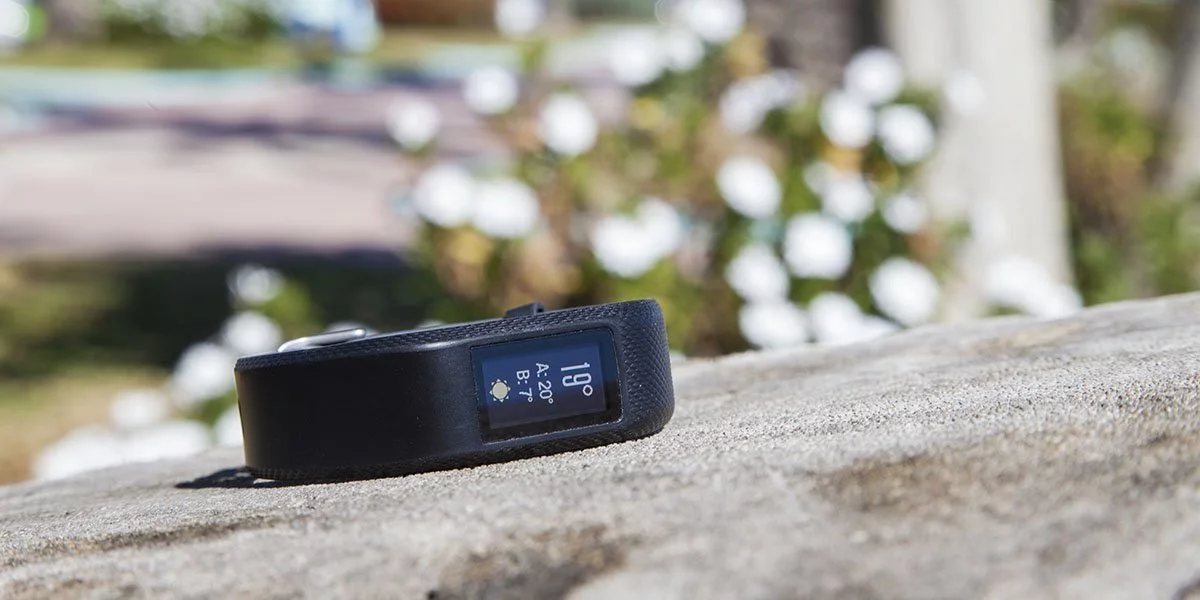
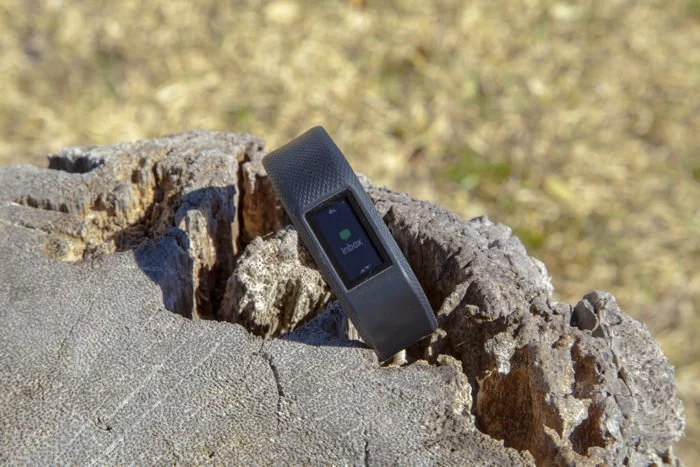
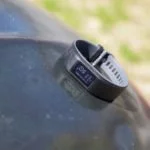
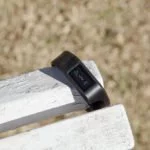
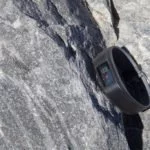
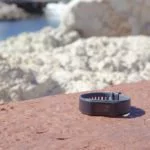
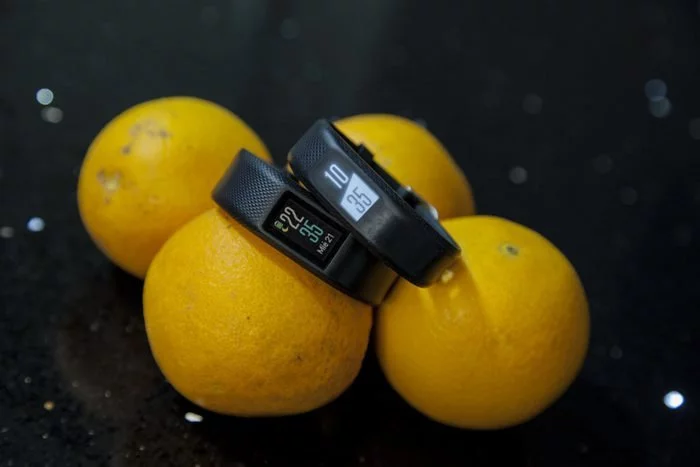
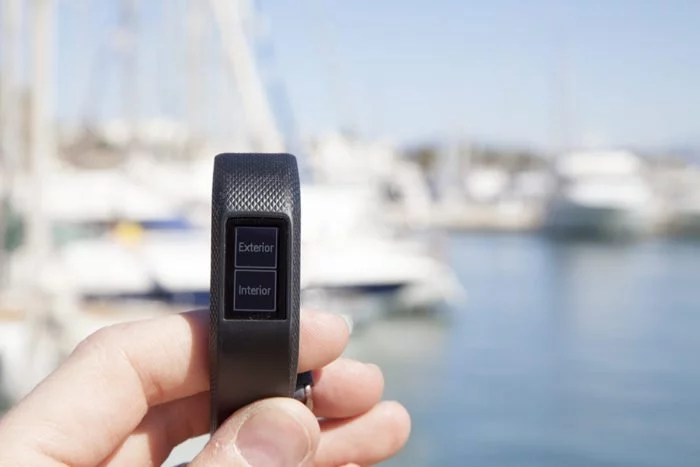
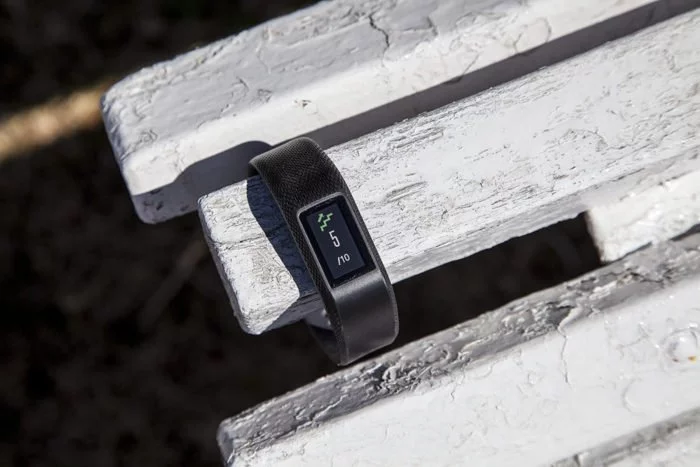

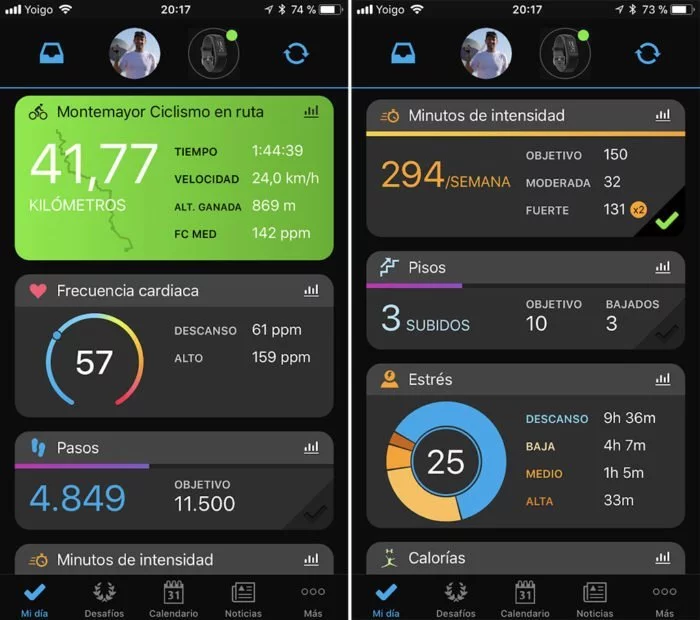
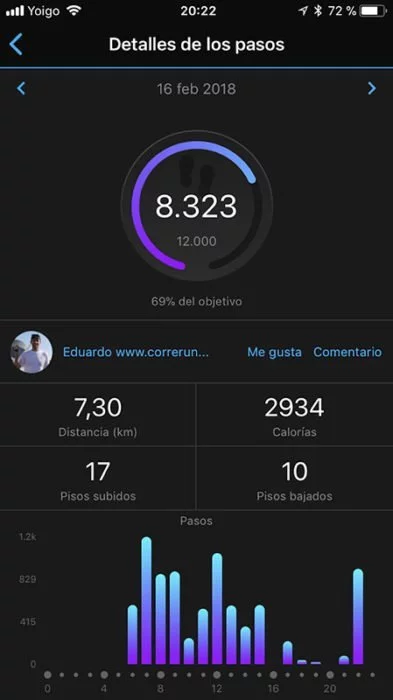
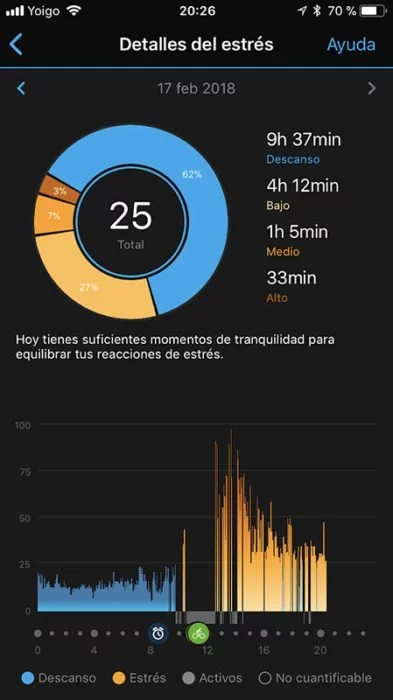
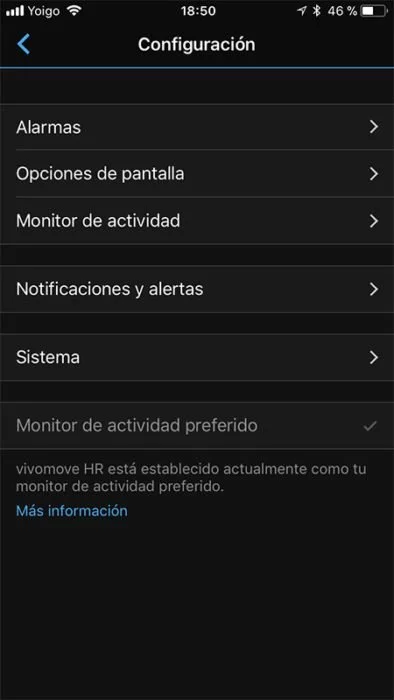
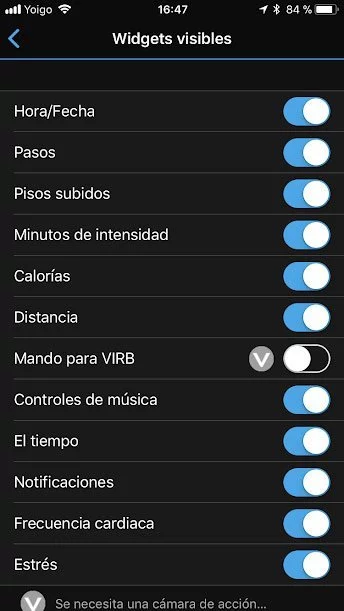
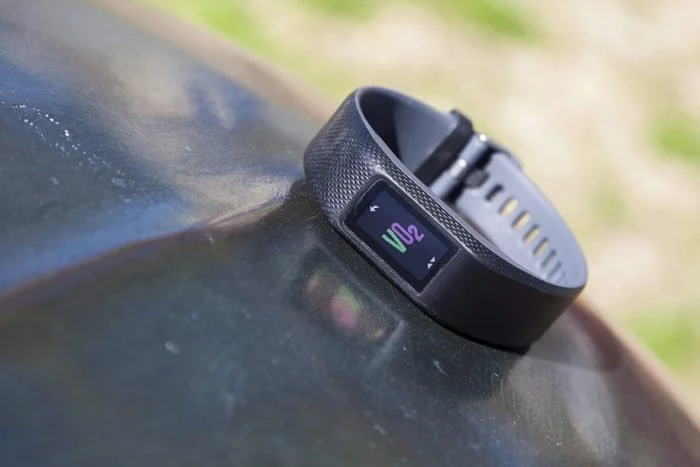
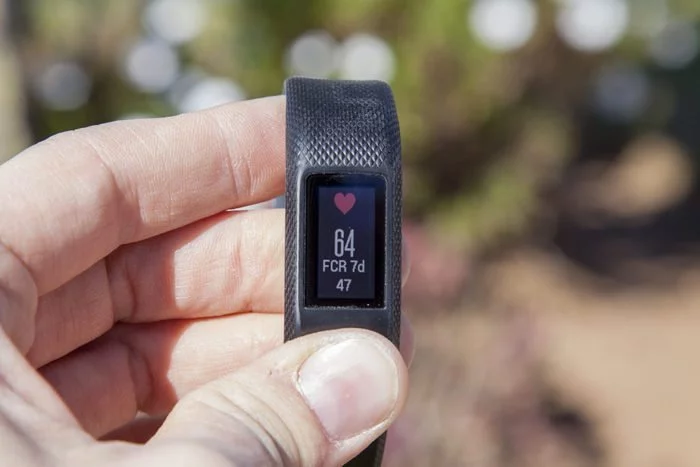
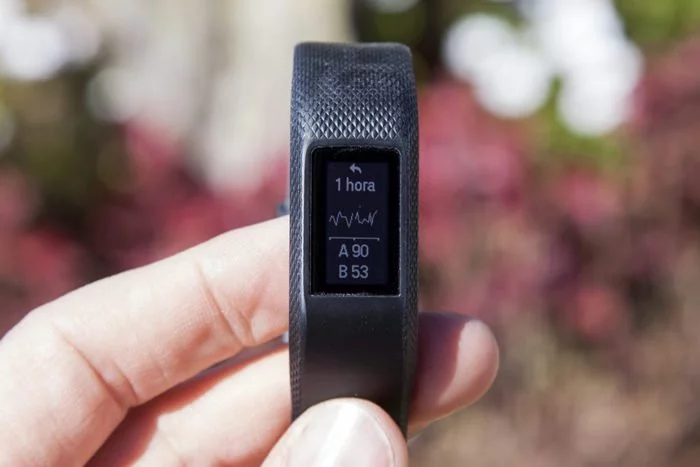
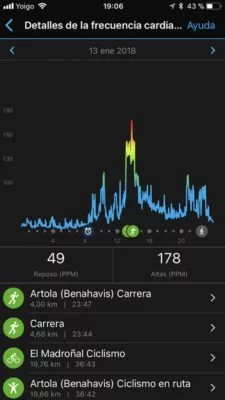
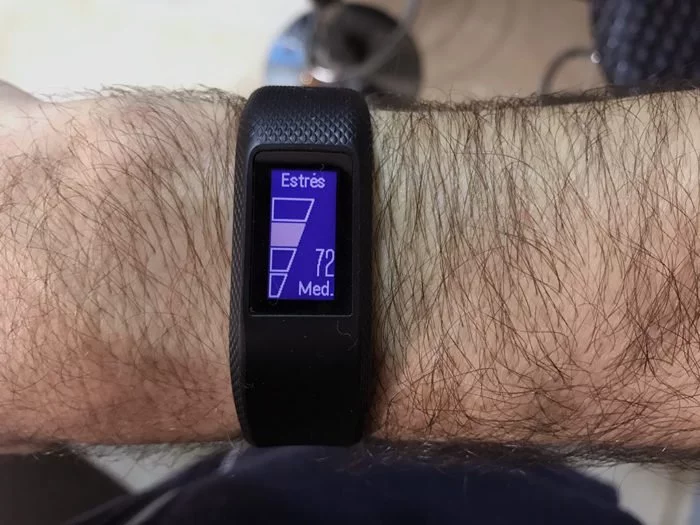
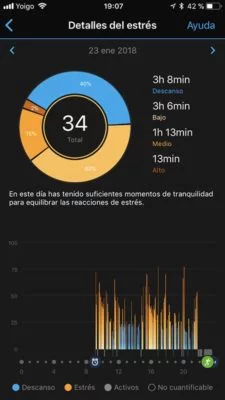
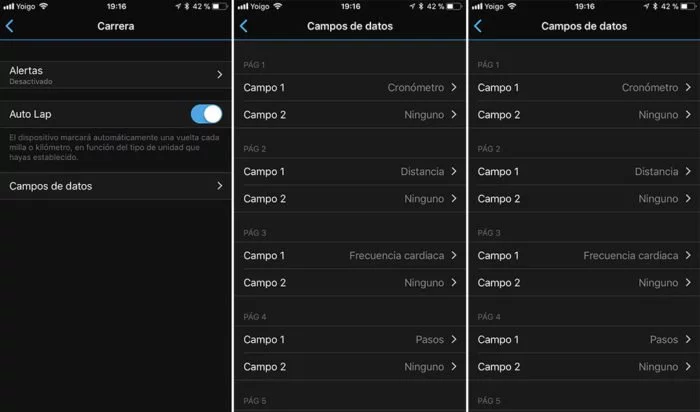
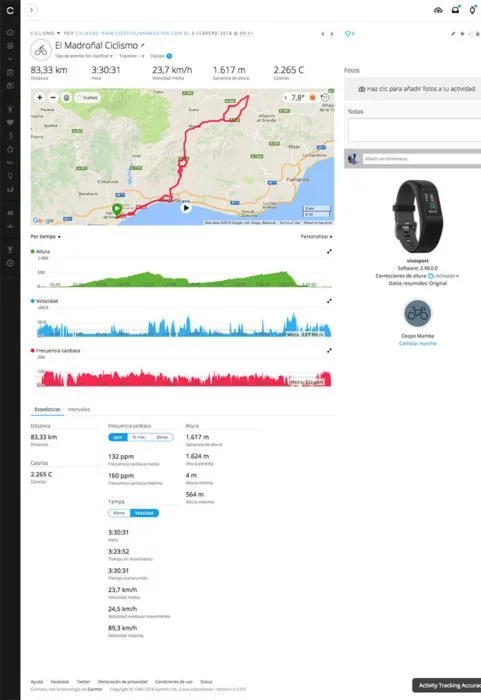

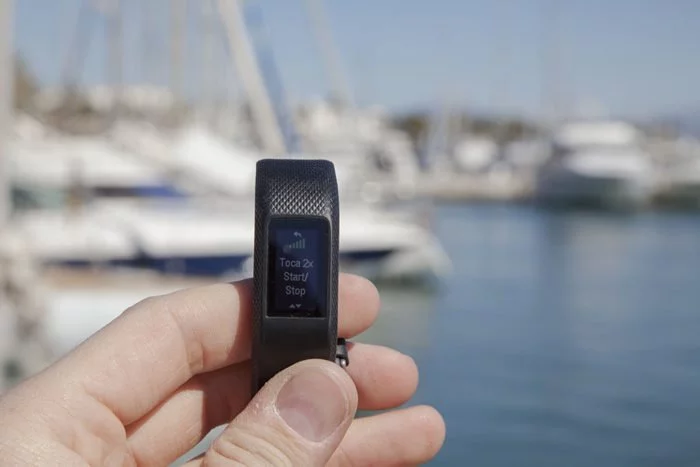
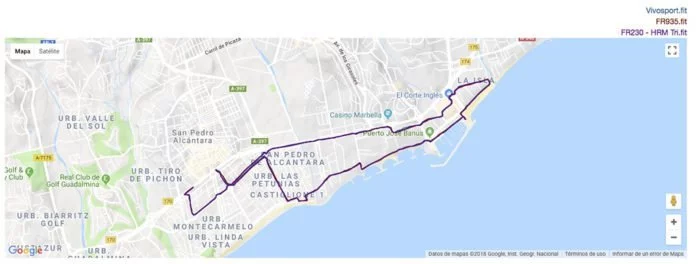
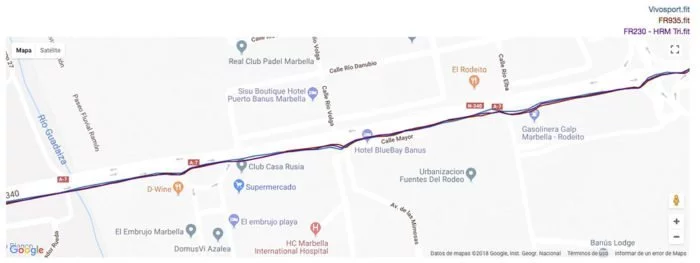

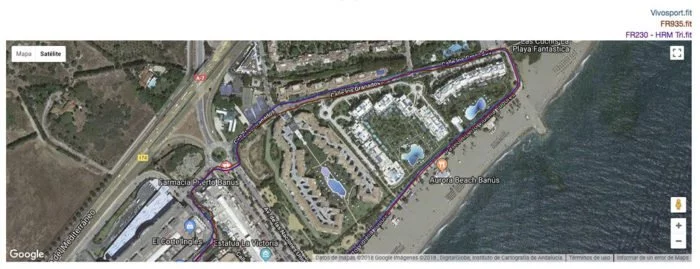
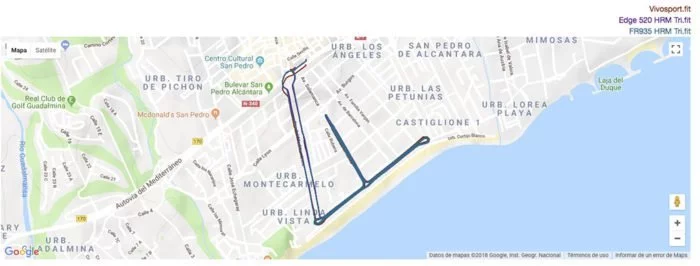
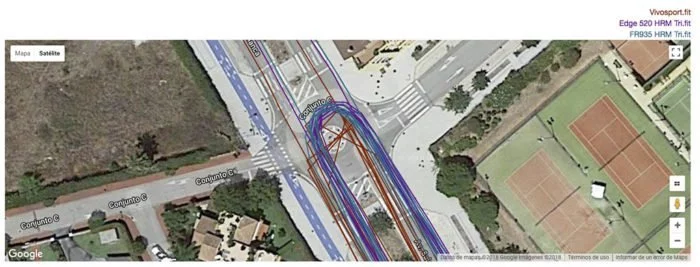
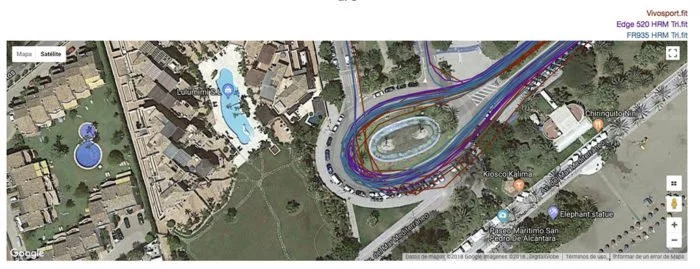
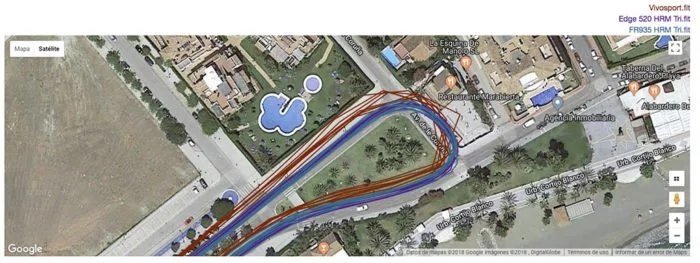
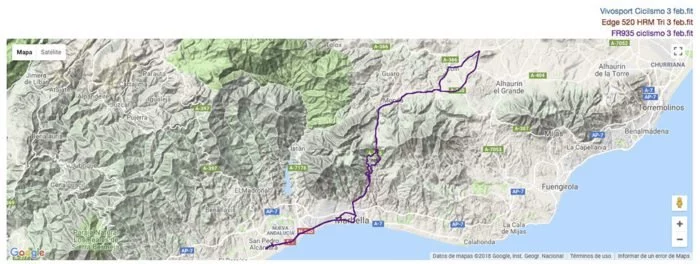

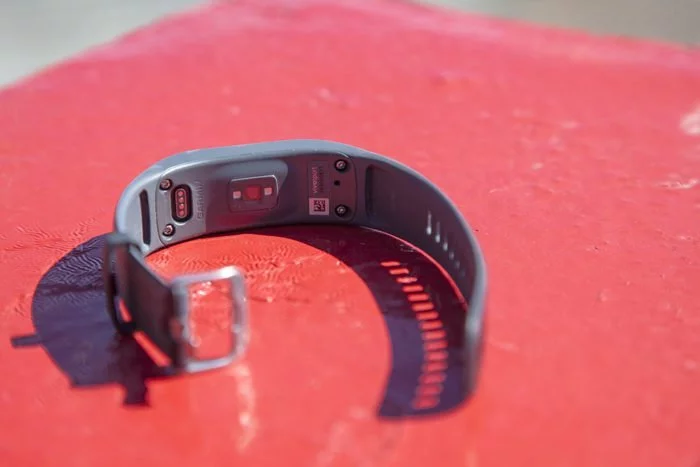









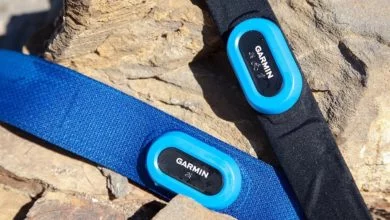
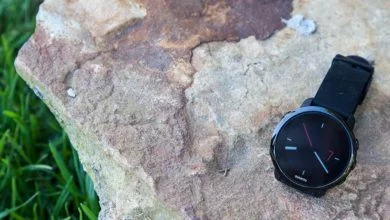
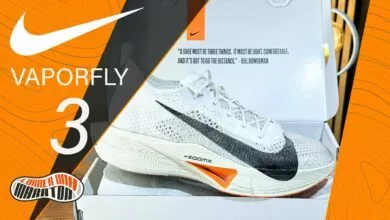

Hola Eduardo! En tu opinion cual es la pulsera o reloj que mejor medicion de pulso optico tiene?
No hablo en una actividad deportiva, sino para el dia a dia.
Para el uso en el día a día no veo grandes diferencias entre los diferentes modelos, más allá de la tasa de registro. En ese sentido, todos los modelos nuevos tienen registro constante.
Hola Fran, buenas noches.
Respecto a tu pregunta si te ayuda ….. la Vivosport está a años luz de fitbit hr en los datos que preguntas (la Fitbit que tenia fallaba mas q una escopeta de feria y la he regalado), encima tienes mil datos más en la Vivosport que ayudan a controlar tu estado de salud día a día. Axte de todo esto tienes características de reloj gps , altímetro baro, uso piscina, control música cascos, etc etc. La pulsera se ajusta a la muñeca mejor que la mayoría modelos debido a que es algo elástica y aunq se hinche tu muñeca en días calurosos no te molestara y no se moverá tanto como otros modelos más rígidos.
saludos
Muchas gracias por contestar Caelon! si! es una de las que he mirado y que veo mas completa y seguramente le coja esa.
Saludos
Por cierto! que tal te mide las pulsaciones en la muñeca?
Hola, buenas noches.
Coincido contigo en tu valoración, a mí tampoco me gustaba al principio, pero pronto me di cuenta que como la Vivosport no hay nada en el mercado a día de hoy, por eso me la quede pero en amarillo. Bonita bonita no, pero es una pequeña gran bestia para el día a día y para todo tipo de actividades, incluida piscina. Los datos que se obtienen ejercicio no se quedan muy lejos de los modelos Forerunner.
Dicho esto, el despótico tiene algún PERO, lo primero es el tiempo que tarda en detectar las variaciones bruscas de pulsaciones durante las series (aunq al final muestra las mismas gráficas que Forerunner con banda pecho), lo segundo es la tema BAROMETRO y los avisos metereologicos xq el Vivosport directamente se los inventa (una pena xq es una característica que puede evitar más de un susto sobretodo en montaña), y la tercera es que no puede ser utilizado como pulsimetro externo bluetooth iPhone aunq si mediante ant+ con otros Garmin, increíblemente tampoco es compatible con bandas pecho.
Si alguien sabe cómo configurar el tema alertas metereologicos correctamente ….agradecería mucho la ayuda.
Saludos
La Garmin Vivosport no tiene avisos meteorológicos en función del barómetro, los datos son a través de la aplicación Garmin Connect por lo que tiene que haber conexión constante con el teléfono, y se obtienen de los mismos servidores de donde proceden todos estos servicios.
Hola Eduardo. Me gustaría plantearte una duda. Soy deportista habitual y ando en búsqueda de un reloj que tenga lo siguiente: bici, natación y carrera y que, además, tenga la posibilidad de almacenar música y conectarle unos airpods. En principio solo he visto el TomTom (descartado por los problemas en su división y por diseño) y el nuevo Garmin que se me va bastante de precio y el diseño no termina de convencerme. Salvo que haya mirado mal, creo que ni Suunto, ni Polar ni Garmin tienen más modelos o, simplemente, modelos que cumplan mis requisitos. Digamos que lo que más se ajusta en diseño, precio y prestaciones es un Garmin Forerunner 735XT, pero es un modelo que tiene ya un tiempo y que no tiene la capacidad para almacenar música. ¿Qué puedo hacer? ¿Esperas que Garmin presente algo en el corto plazo con música?
Un cordial saludo y felicidades por la página.
Efectivamente ahora mismo sólo están los modelos que indicas, sin entrar en relojes inteligentes. Seguro que el FR645 no será el único modelo con música, pero no te puedo decir cuándo habrá más modelos que lo ofrezcan.
Hola Eduardo, yo tengo la vivo3 y me va genial para el día a día, sin embargo estaba pensando en comprarme un pulsómetro con gps para ir a correr y Crossfit, mi pregunta es la siguiente; en la vivo3 o en esta que es su siguiente evolución, en caso de que para correr lleve otro pulsómetro tambien de Garmin, suma esa actividad y todos sus parámetros a los que lleves realizados con la pulsera correspondiente?, ¿se sincronizan? o como va el tema.
Sí, Garmin ya sincroniza todos los datos del monitor de actividad a nivel de la plataforma Garmin Connect. Por ejemplo puedes usar el Vivosmart 3 en el día a día y luego un reloj GPS para correr, y cuando sincronices el reloj tendrás los datos de actividad de Vivosmart 3.
No la recomiendo. Hago crossfit y la compre hace 1 mes. Saltando el cajon me caí y se rompió la correa!!!! ahora llamo y resulta que no hay reemplazo. osea, 180 lukas botadas a la basura.
hola, estoy buscando una pulsera para regalar a mi madre, me gustaria que se pudiese por lo menos duchar con ella, que tuviese medidos de pulsaciones incluido para sin usar la banda vaya, y monitorizase sueño y pulsaciones todo el dia, a poder ser que mida escalones pero la Garmin vivosport se me va de precio, alguna sugerencia?
Échale un vistazo a la Vivosmart 3: https://www.correrunamaraton.com/garmin-vivosmart-3-review/
Buenas noches Eduardo, felicitaciones por tus analisis soy Carlos Fernando Lopez de Colombia, hace un mes compre una Vivosport, hace un par de días dejó de funcionar el contador de pisos es decir el barómetro barometrico, pregunta esto se puede dañar? Los de Garmin me dice que limpie el orificio donde va, pero ni ellos sabe donde está , tu me podrías i Dívar donde se encuentra o que puedo hacer en este caso, muchas gracias Eduardo por tu ayuda.
Está en la parte trasera, debajo de la pegatina con el número de serie.
Buenas tardes,
Estoy buscando una herramienta que me ayude a medir mi pulso y contar calorías. Sólo hago bicicleta estática y andar. No soy deportista, pero por diversas causas necesito algo que me motive a moverme un poco. A fecha de hoy, ¿sigues pensando que esta pulsera es recomendable o ha salido algún modelo similar que se le pueda cambia la correa en caso de estropearse?
Saludos y gracias por tus reviews.
En formato pulsera, como novedad tienes el Vivosmart 4, pero no tiene GPS (el Vivosport sí).
Si quieres poder cambiar la correa y no te importa que sea un reloj, el Suunto 3 Fitness es una gran opción.
Hola Eduardo! Antes que nada quería darte las gracias por esta review, es la mejor que he visto y se nota todo el trabajo detrás. Mi duda es la siguiente: Llevo tiempo queriendo comprarme una pulsera de actividad y me gustaría saber si funciona bien con entrenamiento de fuerza. Yo suelo hacer peso libre (barra libre,pesas, pesas rusas), no me siento en las máquinas, o hiits, además de andar todo lo que puedo. Entreno entre 5 y 6 días a la semana.
Muchas gracias por todo!
Si te refieres a datos de pulso, para ese tipo de ejercicio debes usar una banda pectoral porque el sensor óptico no es fiable.
Buenas, primero felicitarte por el artículo, muy bien explicado todo. Te escribo por lo siguiente, y a ver si me puedes echar una ayudita. El deporte que más practico es el fútbol y me gustaría monitorizar sobretodo velocidad y distancia recorrida durante los entrenamientos y los partidos. había pensado en al garmin de la que hablas por eso de incorporar GPS, pero leyendo tu análisis sobre la fiabilidad del GPS no estoy seguro de si me contaría con precisión la distancia y la velocidad en un lugar tan reducido como es un campo de fútbol 7. ¿Qué me recomendarías para monitorizar con precisión esos parámetros en fútbol? Un saludo, y muchas gracias.
El GPS no es la mejor solución para medir distancias cuando hay tantos cambios de dirección y variación de ritmos. Lo mejor sería un footpod, pero evidentemente no es viable.
Por lo demás, el Vivosport es muy similar para ese uso como cualquier otro reloj.
Buen dia Mateo
Consulta. Acabo de comprar una pulsera Vivosport Gris y mi consulta es: Puedo ducharme con ella y tambien, entre otras actividades, hago kayak de travesia en Lagos y fiordos, puedo mojarla al meterme al agua con ella, sin que pueda alterar su funcionamiento?
Muchas gracias y te envio un un abrazo desde Patagonia, Chile.
Sí, sin problema con el agua
Hola, llevo varias semanas dandole vueltas a hacerme con un reloj o con una pulsera, tras mirar mucho tu pagina, felicidades por cierto la mejor sin duda. Total que estoy entre la pulsera vivosport y el Forerunner 35, y no termino de decidirme. Salgo a correr 2 dias, entreno escalada en rocodromo dos dias a la semana, minimo, y otro dia salgo al campo, bien a escalar bien a patear. Total que no termino de ver cual me vendria mejor, tampoco quiero volverme loco y dejarme un paston. Creo que para mi esencial seria el Gps y el cardio, me gusta lo de los intervalos, para alguno de los entrenamientos de escalada me parece util.
Cualquier ayuda o sugerencia sera bienvenida.
Gracias
En ambos casos irás bien servido, pero si el tamaño no es una objeción me quedaría con el Forerunner 35 por visibilidad de pantalla, especialmente en escalada. La del Vivosport se puede hacer algo pequeña.
Puedes decirme como cambiar la batería de mi , Vivosmart HR+, no me dura ni 12 horas
Gracias
No permite la apertura sin romperse, no hay posibilidad de cambio de batería
Buenas, me gustaría comprar una pulsera de correr que tenga un pulsómetro fiable, el único uso que le daré será para running, por lo que no es necesario que soporte natación, ni ciclismo ni similar. Cual me recomendarías? muchas gracias de antemano y enhorabuena por el curro q haces!
Si tiene que ser en formato pulsera sí o sí, entonces Vivosport es la mejor opción porque tiene GPS. El sensor óptico no va mal, pero al ser tan estrecho es fácil que entre luz y distorsione las lecturas.
Tienes el Forerunner 35 que no es mucho más grande y el sensor óptico tiene un mejor rendimiento (además de ofrecer más autonomía).
Buenas Eduardo! Gracias por tu respuesta. Realmente me daría igual que llevase gps ya que quiero escuchar música por lo que tendré que llevar movil a narices. Teniendo esto en cuenta sigues recomendando la Vivosport?
Me dejan un fitbit charge 2 con garantía de dos años por 30 euros, no sé que tal opción lo ves….
Gracias de antemano!
Mis opciones son:
Vivosmart HR Plus por 50 euros
Fitbit charge 2 por 30 euros
Garmin vivosport por 60 euros
Realmente la quiero solo para running y para seguimiento diario
Claramente Vivosport
Hola Eduardo,antes de nada darte la enhorabuena por tu análisis, he leído varios y es el más completo.
Tengo una Vivosmart HR plus con la que estoy muy contenta pero está ya muy deteriorada y necesito una nueva. Considero que las prestaciones que ofrece son para mí muy buenas, la uso a diario y para entrenar. Veo que la evolución sería en cierto modo la Vivosport pero el tema de la correa supone un problema. Tienes conocimiento de si van a sacar próximamente una sucesora de ésta? Muchas gracias ☺
Estos días debería haber nuevas presentaciones (ya hay muchos modelos filtrados), así que lo mejor es que estés atenta a ver si hay algo que te encaje.
Buenas tardes,
se puede vincular con Strava? gracias
Lo que vinculas no es la pulsera en sí, es la plataforma, en este caso Garmin Connect. Y sí, se puede vincular sin ningún problema.
Hola buenas Eduardo,
en primer lugar decirte que te abras un canal youtube o algo, eres un profesional del análisis se nota que hay trabajo detrás.
Estoy buscando una pulsera multideporte con gps para salir de senderismo para que me mida la ruta, correr, fuerza, jugar al padel y si puede ser natación. Cuál me recomiendas? o algun producto que se acerque?
un saludo y gracias de antemano
Gracias Jaime. Tengo canal de Youtube… que no utilizo, porque mientras mis días sigan teniendo 24 horas lo cierto es que tengo que priorizar bastante.
Puedes echar un vistazo a las pulseras de actividad recomendadas en este enlace: https://www.correrunamaraton.com/mejor-pulsera-actividad-2020/.
Pero sí, básicamente la Vivosport seria una buena opción, aunque con esa variedad de ejercicios vería más interesante un reloj.
gracias eres un fiera.
Felicitaciones x el review, es un análisis muy detallado, para un producto que seria bueno por no ser la correa que es una reverenda M… por durabilidad, en mi caso y con los cuidados del caso… no usarla siempre (que deberia hacerse así) se rompio. He buscado alternativas para cambio de correa y no encuentro, salvo consejo de alguién.
Consejo para el blog y para el post… no recomendes una cosa que por muy buena que sea a nivel de especificaciones, tenga un accesorio tan malo que malogre el equipo, te jugas tu reputación.
CONCLUSIÓN… NO COMPREN ESA BANDA, ES MALISIMA NO LE VAS A DURAR NADA X LA CORREA.
GARMIN.. La cagaron… no les compro nada nunca mas.
Hola si tuvieras q elegir entre vivoSport o forerunner 35 o o algun pulsometro Máximo 100 euros preferentemente en buscaba Garmin que ten gas gps incorporado para correr y q mida bien cuál sería ?
Me importa mucho q no se rompa porque no me gustaría q se rompa la pulsera cuan cierto es que se rompe
Sin duda prefiero el FR35, tanto por practicidad de un reloj como por lo comentado de poder cambiar la correa en caso de rotura.
Buenas!
Yo tengo un Forerunner 235 y me estoy planteando cambiarlo por esta pulsera. ¿Qué diferencia de prestaciones hay entre estos dos productos? Quiero decir… ¿qué podría echar de menos del FR235 si finalmente lo cambiase por la Vivosport?
Pues perderías de todo… autonomía, entrenamientos, configuración de pantallas…
Pero si yo practico simplemente running de forma ocasional (3 ó 4 veces por semana), sólo por salud y controlar el peso, sin competir y estas cosas… ¿Ambos productos me podrían valer? ¿O el FR 235 seguiría siendo más indicado?
Valerte te valdrá si sólo quieres controlar ritmo o distancia, pero ten en cuenta que es un paso atrás en todos los sentidos.
Hola, una pregunta, el garmin vivosport si tiene la opcion de programar entrenamientos de intervalo?, y es util para medir las pulsaciones en tiempo real durante este tipo de entrenamientos?. o en todo caso cual me recomendarias para ese tipo de entrenamiento?. Gracias
No, el Vivosport no soporta los entrenamientos avanzados. El Garmin Forerunner 45, por ejemplo, sí te serviría para esa función.
Hola, una duda, te da la pulsera la altura y el desnivel positivo. Teniendo altímetro barométrico lo veo factible…pero no lo indica en ningún sitio… Muchas gracias.
No se puede ver en la pulsera. Sólo lo utiliza para las escaleras subidas a lo largo del día. En el resumen de entrenamiento da altura ganada y perdida, pero no una gráfica.
La correa se rompe fácil y no hay posibilidad de cambiar, grave error